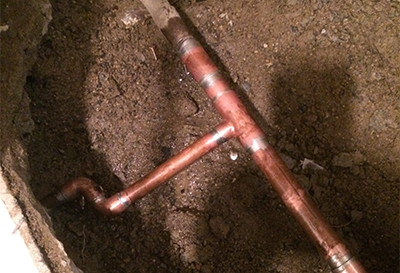Right here in the next paragraph you can discover a bunch of really good news all about Top leak detection hacks.

Early detection of leaking water lines can minimize a prospective catastrophe. Some little water leakages may not be visible.
1. Take A Look At the Water Meter
Every house has a water meter. Examining it is a guaranteed manner in which helps you find leaks. For starters, shut off all the water sources. Ensure no one will certainly flush, make use of the faucet, shower, run the washing machine or dishwashing machine. From there, most likely to the meter and watch if it will certainly change. Since no person is using it, there should be no activities. If it moves, that shows a fast-moving leak. If you spot no adjustments, wait a hr or two and examine back once more. This means you may have a slow leak that could even be underground.
2. Examine Water Usage
If you identify sudden modifications, despite your consumption being the exact same, it means that you have leakages in your plumbing system. An unexpected spike in your costs indicates a fast-moving leak.
A steady increase every month, even with the exact same routines, reveals you have a slow-moving leak that's likewise slowly escalating. Call a plumber to completely check your building, particularly if you feel a cozy area on your flooring with piping below.
3. Do a Food Coloring Test
30% comes from bathrooms when it comes to water consumption. Test to see if they are running effectively. Drop flecks of food shade in the tank and wait 10 mins. If the shade somehow infiltrates your dish during that time without flushing, there's a leakage between the tank and also dish.
4. Asses Exterior Lines
Don't forget to check your outside water lines too. Examination spigots by connecting a yard hose pipe. Must water permeate out of the link, you have a loosened rubber gasket. Replace this and make sure all links are tight. It will aid get it professionally checked out and preserved yearly if you've got a sprinkler system. One little leak can throw away tons of water and also surge your water bill.
5. Inspect and also Assess the Scenario
Property owners must make it a practice to check under the sink counters as well as also inside cupboards for any kind of bad odor or mold growth. These 2 red flags suggest a leakage so prompt focus is required. Doing routine examinations, even bi-annually, can conserve you from a significant problem.
Check for stainings as well as deteriorating as the majority of pipes and appliances have a life span. If you suspect dripping water lines in your plumbing system, don't wait for it to escalate.
Early detection of dripping water lines can reduce a possible calamity. Some tiny water leakages might not be visible. Inspecting it is a guaranteed means that helps you discover leakages. One little leakage can waste loads of water and spike your water bill.
If you think leaking water lines in your plumbing system, do not wait for it to rise.
WARNING SIGNS OF WATER LEAKAGE BEHIND THE WALL
PERSISTENT MUSTY ODORS
As water slowly drips from a leaky pipe inside the wall, flooring and sheetrock stay damp and develop an odor similar to wet cardboard. It generates a musty smell that can help you find hidden leaks.
MOLD IN UNUSUAL AREAS
Mold usually grows in wet areas like kitchens, baths and laundry rooms. If you spot the stuff on walls or baseboards in other rooms of the house, it’s a good indicator of undetected water leaks.
STAINS THAT GROW
When mold thrives around a leaky pipe, it sometimes takes hold on the inside surface of the affected wall. A growing stain on otherwise clean sheetrock is often your sign of a hidden plumbing problem.
PEELING OR BUBBLING WALLPAPER / PAINT
This clue is easy to miss in rooms that don’t get much use. When you see wallpaper separating along seams or paint bubbling or flaking off the wall, blame sheetrock that stays wet because of an undetected leak.
BUCKLED CEILINGS AND STAINED FLOORS
If ceilings or floors in bathrooms, kitchens or laundry areas develop structural problems, don’t rule out constant damp inside the walls. Wet sheetrock can affect adjacent framing, flooring and ceilings.
https://www.servicemasterbyzaba.com/blog/how-to-detect-water-leakage-in-walls/

I hope you enjoyed reading our topic on Finding hidden leaks. Thanks a lot for finding the time to read through our article. Sharing is good. Helping people is fun. Thanks for going through it.